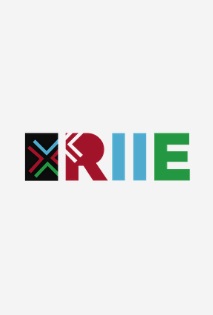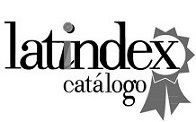Percepción docente sobre la participación de los sectores productivo y social en el currículum escolar de dos universidades mexicanas
DOI:
https://doi.org/10.30972/riie.16228018Palabras clave:
Currículum Escolar, Gobernanza Universitaria, Educación Superior, Diseño CurricularResumen
Esta es una investigación empírica con enfoque cuantitativo que busca conocer la percepción docente sobre la participación de los sectores productivo y social (partes interesadas externas) en el currículum escolar de dos universidades públicas con mayor cobertura de matrícula en una entidad del noroeste mexicano (Sinaloa). Participaron un total de 178 profesores de la Universidad Autónoma de Sinaloa y la Universidad Autónoma de Occidente. Se realizaron pruebas de contraste para verificar si la adscripción institucional, era un factor determinante para percibir el fenómeno de manera diferenciada. No obstante, las tradiciones de gobernanza de ambas instituciones han sido distintas a través del tiempo, los hallazgos revelaron que la percepción docente es muy similar en ambas Instituciones de Educación Superior (IES), concluyéndose que atienden a una lógica curricular global y en apego a las normativas educativas vigentes, más allá de los modelos y estilos de gobierno educativo tradicionales.
Descargas
Citas
Brunner, J. (2011). University governance: Typology, dynamics and trends. Revista de Educación, (355), 137-159. Recuperado de https://www.educacionfpydeportes.gob.es/revista-de-educacion/numeros-revista-educacion/numeros-anteriores/2011/re355/re355-06.html
Corbetta, P. (2017). Metodologia e tecniche della ricerca sociale. Bologna, Italia: il Mulino.
Colmenárez, L. (2004). Construcción teórica de la vinculación universitaria Sector Productivo. Compendium: Revista de Investigación Científica, (13), 5-24. Recuperado de https://www.redalyc.org/pdf/880/88001301.pdf
Dalgaard, P. (2008). Introductory statistics with R. New York, EE. UU:Springer. DOI: 10.1007/978-0-387-79054-1
Gayle, J., Tewarie, B., & White, A. (2003). Governance in the twenty-first century university: Approaches to effective leadership and strategic management. Washington D. C., EE. UU: ERIC Digest.
Hair, J. F., Black, W. C., Babin, B. J., & Anderson, R. E. (2010). Multivariate data analysis (7.ª ed.). Nueva York, EEUU: Pearson Prentice Hall.
Keczer, G. (2012). Governance reforms in European universities. International journal of economics and finance studies, 4(2), 55-63. Recuperado de https://dergipark.org.tr/en/pub/ijefs/issue/26153/275440
Kooiman, J. (2003). Societal governance (pp. 229-250). vs Verlag für Sozialwissenschaften. DOI: 10.1007/978-3-663-11003-3_12
Langrafe, T. D. F., Barakat, S. R., Stocker, F., y Boaventura, J. M. G. (2020). A stakeholder theory approach to creating value in higher education institutions. The Bottom Line, 33 (4), 297-313. DOI: 10.1108/BL-04-2020-0025
Sarabia-Altamirano, G. (2016). La vinculación universidad-empresa y sus canales de interacción desde la perspectiva de la academia, de la empresa y de las políticas públicas. CienciaUAT, 10(2), 13-22. Recuperado de http://www.scielo.org.mx/scielo.php?script=sci_arttext&pid=S2007-78582016000100013&lng=es&tlng=es.
Tobón, S. (2008). La formación basada en competencias en la educación superior: el enfoque complejo. Recuperado de https://cmapspublic3.ihmc.us/rid=1LVT9TXFX-1VKC0TM-16YT/Formaci%C3%B3n%20basada%20en%20competencias%20(Sergio%20Tob%C3%B3n).pdf
Pardo, A., y Ruiz, M. (2002). Guía para el análisis de datos. Madrid, España: McGraw-Hill Interamericana de España.
Plata, L. A. M. (2007). Currículo y pertinencia en la educación superior. Bogotá, Colombia: COOP. Editorial Magisterio.
Pinar, W. (2014). La teoría del currículum. Madrid, España: Narcea.
Powell, P., y Walsh, A. (2017). Whose curriculum is it anyway? Stakeholder salience in the context of degree apprenticeships. Higher Education Quarterly. https://doi.org/10.1111/hequ.12137
Trackman, L. (2008). Modelling University Governance. Higher Education Quarterly, 62(1/2), 63-83. https://doi.org/10.1111/j.1468-2273.2008.00384.x
Universidad Autónoma de Occidente. (2020). Plan Lince de Desarrollo Institucional 2020-2024. Recuperado de https://www.uadeo.mx
Universidad Autónoma de Sinaloa. (2021). Plan de Desarrollo Institucional con Visión de Futuro 2025. Recuperado de https://www.uas.edu.mx
Descargas
Publicado
Cómo citar
Número
Sección
Licencia

Esta obra está bajo una licencia internacional Creative Commons Atribución-NoComercial 4.0.
Aquellos autores/as que tengan publicaciones con esta revista, aceptan los términos siguientes:
- Los autores/as conservarán sus derechos de autor y garantizarán a la revista el derecho de primera publicación de su obra, el cuál estará simultáneamente sujeto a la Licencia de reconocimiento de Creative Commons que permite a terceros compartir la obra siempre que se indique su autor y su primera publicación esta revista.
- Los autores/as podrán adoptar otros acuerdos de licencia no exclusiva de distribución de la versión de la obra publicada (p. ej.: depositarla en un archivo telemático institucional o publicarla en un volumen monográfico) siempre que se indique la publicación inicial en esta revista.
- Se permite y recomienda a los autores/as difundir su obra a través de Internet (p. ej.: en archivos telemáticos institucionales o en su página web) antes y durante el proceso de envío, lo cual puede producir intercambios interesantes y aumentar las citas de la obra publicada. (Véase El efecto del acceso abierto).






.jpg)


